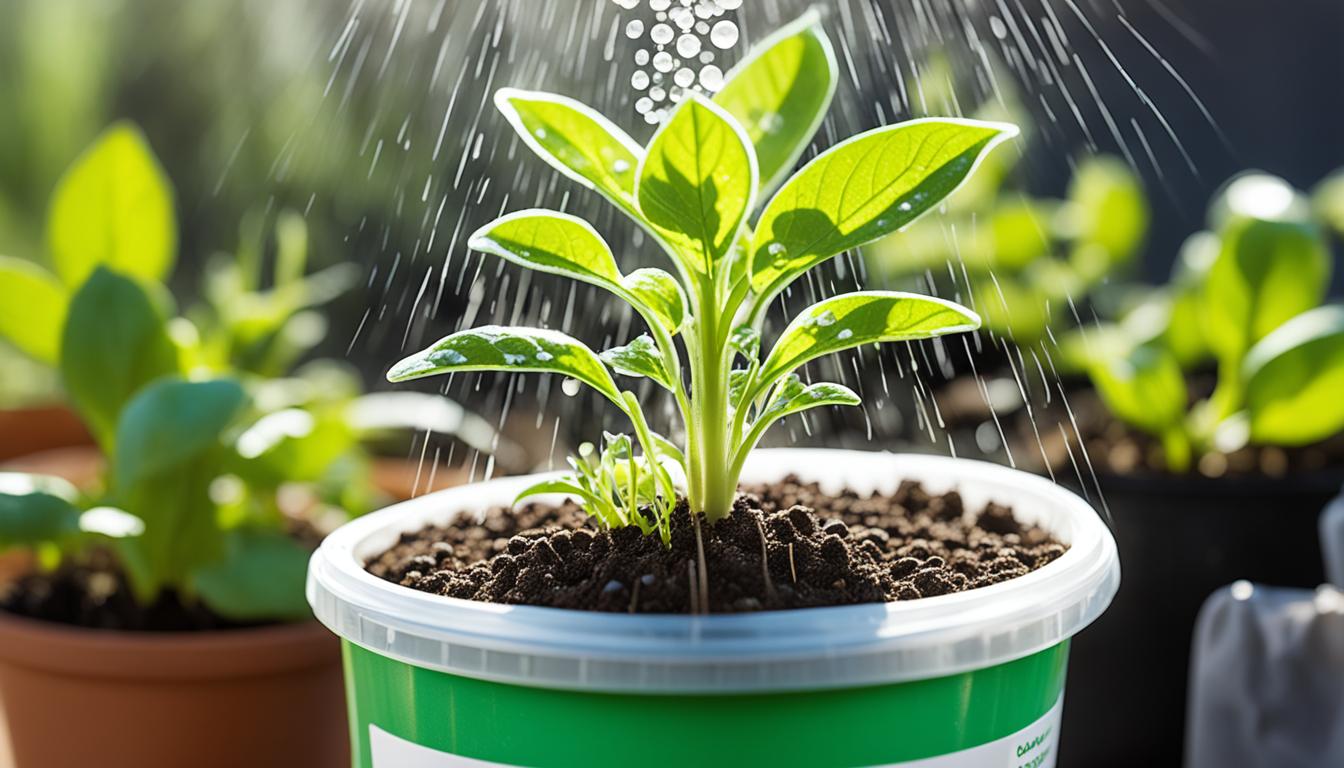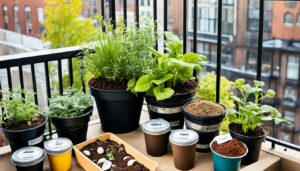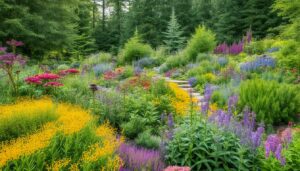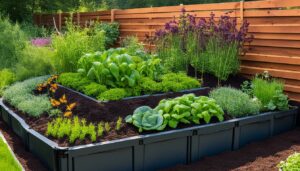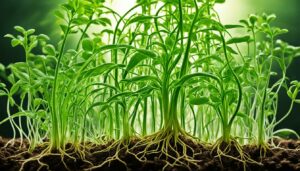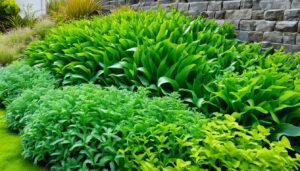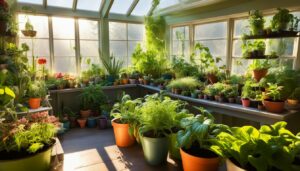Did you know that a single sunflower can produce up to 2,000 seeds? Imagine the potential of those seeds, each one containing the blueprint for a towering sunflower, all needing just the right conditions to turn possibility into reality. This is the wonder of germination, a natural phenomenon that captivates gardeners and scientists alike. With the right seed starting guide, starting plants from seeds becomes a journey of transformation, where the care given to tiny specks of life can yield an entire garden bursting with color and vitality. Achieving optimal germination is both a science and an art—a meticulous dance of temperature, moisture, and air that awaits the first thrilling push of a seedling through soil.
As you embark on this magical process, understanding the necessary environmental factors is key to turning that packet of seeds in your hands into rows of flourishing plants. Herein lies the promise and excitement of the botanical world, where a gardener’s patience and knowledge turn seeds into legacies of blooms and harvests.
Key Takeaways
- Seeds are powerhouses of potential, often containing hundreds or even thousands of future plants.
- Understanding the trifecta of successful seed starting: temperature, moisture, and oxygen is paramount.
- Optimal germination is achieved through a delicate balance of environmental conditions.
- A comprehensive guide to seed starting can significantly increase the chances of a seed transforming into a healthy plant.
- The joy of gardening begins with the emergence of the first seedling leaves, a moment of promise for new growth.
- Starting plants from seeds is not just practical but also a deeply rewarding experience.
Understanding the Fundamentals of Seed Germination
Embarking on the voyage of seed starting indoors requires a grasp of the rudimentary processes that transition a seed from dormancy to vigorous life. It’s a dance with nature’s elements, finely tuned to the needs of each tiny potential plant. When you unlock the secrets of successful germination, you lay the groundwork for a garden that thrives right from its inception.
The Role of Temperature in Seed Starting
For seeds to awaken, they solicit a comforting warmth — a temperature range that whispers to them that the time is right for growth. These climate conditions vary across species; some prefer the cool onset of spring, others the warm embrace of a summer’s day. However, mastering this aspect is essential, especially when nurturing seeds indoors. Practical germination tips include the supplemental embrace of heat mats, designed to mimic the earth’s warm hug, encouraging your seeds to germinate more swiftly and reliably.
Moisture: The Catalyst for Seed Activation
The very essence of seed germination lies in its contact with moisture. Water acts as the spark, the initial nudge for a seed to embark on growth. It is the catalyst that swells the seed, inviting the first root, or radicle, to emerge. Seed starting indoors requires a controlled approach to water — sufficient to inspire germination without inviting rot or mildew. This delicate balance is pivotal, marking the difference between a seedling’s flourish and its demise.
Importance of Oxygen for Germinating Seeds
Without the subtle, life-giving presence of oxygen, seeds cannot undertake respiration, a fundamental process powering growth. Ensuring your seed starting setup indoors allows for adequate airflow can greatly enhance germination rates. Just as we require breath to live and thrive, so too do these embryonic plants hinge their very emergence on the unseen swirls of the air that surrounds them, rich with the oxygen they eagerly consume.
As a firm believer in the tender art of nurturing green life, your approach to seed starting indoors intertwines knowledge with practice. The germination tips here are but the beginning of a journey in which temperature, moisture, and oxygen play starring roles, guiding your seeds from hidden potential to the first true leaves reaching towards the promise of the sun.
Seed Starting, Germination Tips, Starting Plants from Seeds, Seed Germination
Embarking on the journey of starting plants from seeds can be both exhilarating and challenging. To ensure the seed germination process transitions from the dormant stage to a sprout full of potential, gardeners must apply the best seed starting tips. Let’s explore the cornerstone practices for achieving successful seed germination and ultimately a lush garden.
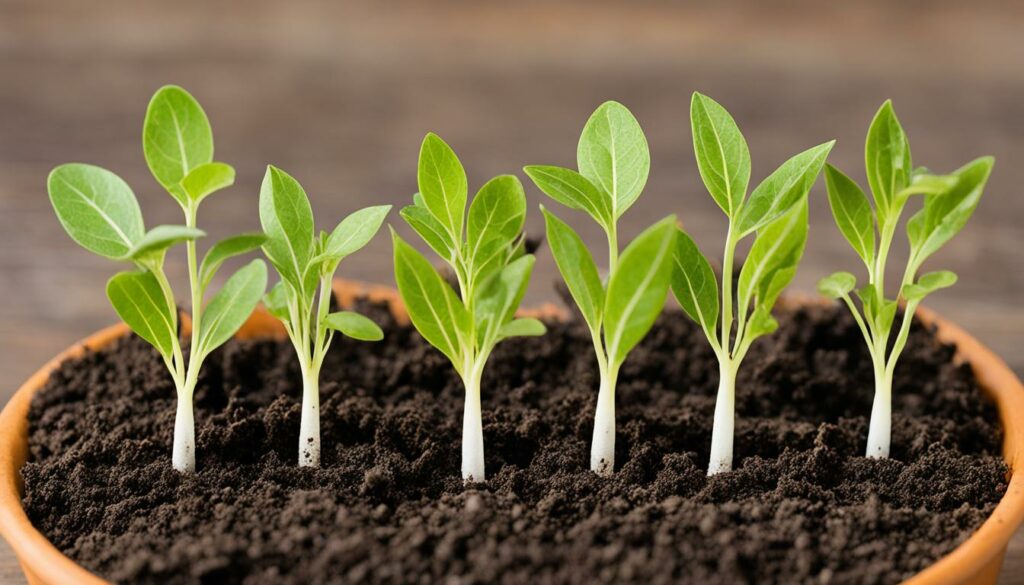
First and foremost, light plays a pivotal role immediately after germination. Seeds require a delicate balance; too little light and the seedlings become leggy, while too much can overexert the tender plants. Equally crucial is soil temperature. Maintaining consistent warmth assists in seedling development and can be monitored with precision using a soil thermometer.
When it comes to planting depth, seeds need attention to detail. Planted too shallow, they risk desiccation; too deep, and they may never break through the soil. A rule of thumb is to plant seeds at a depth twice their diameter, allowing easy emergence while safeguarding from the perils beneath the soil.
Ensuring proper drainage is another key factor. Saturated soils can suffocate seeds, preventing oxygen from reaching them and causing rot. Conversely, soil must retain enough moisture to prevent drying out, necessitating a fine-tuned approach to watering—ideal moisture levels support sustained growth without inducing water stress.
Another influential aspect is the management of humidity and air flow. Enclosures such as plastic wraps can incubate seeds, fostering humid conditions that promote growth; however, introducing a fan can provide gentle air circulation that mimics the natural breeze, discouraging the onset of mold or fungi.
For those in cooler climates, winter sowing offers a unique approach to seed starting. This method involves sowing seeds in mini greenhouses outdoors during winter for natural stratification. The seasonal changes will prepare the seeds so that come spring, they are ready to burst into life synchronously with longer days and warmer weather.
- Light Regulation: Adjust lighting levels post-germination to favor steady growth of seedlings.
- Soil Temperature Control: Use a soil thermometer to maintain a consistent warmth conducive to germination.
- Correct Planting Depth: Plant seeds appropriately for their size to ensure adequate emergence and protection.
- Proper Drainage: Prevent waterlogging to protect against seed rot and provide necessary aeration.
- Humidity and Airflow Management: Use covers and fans to balance moisture levels and ward off plant diseases.
- Winter Sowing: Utilize the cooler months for natural stratification, leading to springtime germination.
By harnessing these techniques, gardeners set the stage for a thriving garden. Each seed planted is a promise of new growth, and with meticulous care, that promise blooms into a vibrant reality.
Selecting High-Quality Seeds for Successful Germination
Embarking on your seed starting guide, the importance of choosing the right seeds cannot be stressed enough—it is the cornerstone of starting plants from seeds and can greatly ensure success early on. Selecting superior seeds enables gardeners to forestall potential issues and paves the way toward a bountiful harvest.
Assessing Seed Viability and Dormancy
To predict the chances of successful germination, performing a seed viability test is an insightful practice. Simple tests, like the water test where seeds are submerged, provide insightful clues about their readiness to grow. Seeds that descend to the bottom typically have better odds of germinating, while those that float are often less viable.
Understanding dormancy is another piece of the puzzle, as certain seeds require specific triggers to sprout. Factors like temperature fluctuations, light exposure, and even seed coat strength, which may prevent water absorption, are all conditions to be considered when helping seeds break dormancy.
Strategies for Overcoming Natural Seed Defenses
With a practical seed starting guide in hand, gardeners learn various methods to conquer a seed’s natural defenses. Let’s delve into strategies for encouraging stubborn seeds to awaken:
- Scarification – This involves physically nicking the seed coat to increase water absorption and hasten germination.
- Stratification – Mimicking natural winter conditions, this method breaks down dormancy by subjecting seeds to cold temperatures for a stipulated period.
- Soaking – Soaking seeds overnight can soften tough outer shells and prompt the germination process.
Ensuring that seeds receive the appropriate environmental cues due to these pre-germination techniques can significantly boost the chances of germination, even in the most resilient of seeds. By adopting these approaches, starting your plants from seeds becomes a more predictable endeavor.
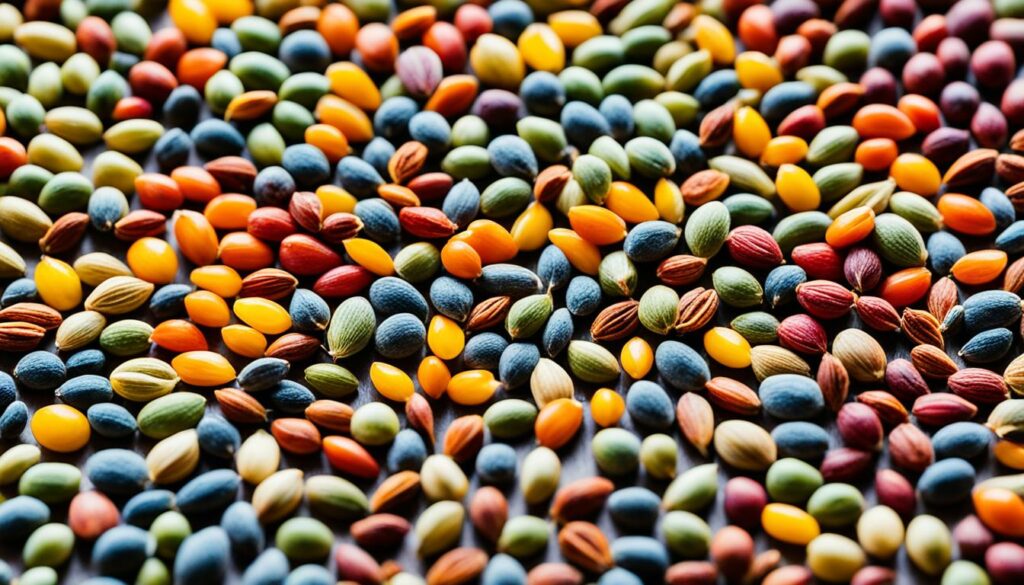
| Method | Benefit | Best For |
|---|---|---|
| Scarification | Improves water and nutrient uptake | Seeds with hard, impermeable coats |
| Stratification | Breaks seed dormancy | Seeds that require cold periods to germinate |
| Soaking | Softens seed coats and enhances germination rate | Larger seeds such as beans and peas |
Creating the Ideal Seed Starting Environment Indoors
For gardeners eager to kickstart their planting season, seed starting indoors is a valuable skill. By carefully managing the microclimate, indoor gardeners can nurture vigorous, healthy seedlings that are primed for transplanting outdoors. So let’s delve into the parameters that are instrumental in fostering seedling growth from the comfort of your own home.
Proper lighting is the cornerstone of indoor seed starting. Seedlings need plenty of light to grow strong and sturdy. If natural light is limited, consider investing in high-quality artificial light sources, such as full-spectrum LED grow lights, to supplement daylight and ensure your seedlings don’t become leggy.
Temperature regulation is another key factor in how to start seeds indoors. Most seeds have an optimal temperature range for germination. Too cold and they’ll languish; too warm and they may be stressed. Heating mats or adjustable thermostats can maintain the ideal temperature, which is particularly important during the cool days of early spring.
Let’s not overlook the importance of humidity and ventilation, which work together to prevent diseases such as damping-off. Containers should have good drainage, and air must circulate freely to keep the foliage and soil surface dry— an environment inhospitable to pathogens. Keep your seed starting area clean to reduce the risk of disease, removing any fallen leaves or debris promptly.
To give you a clearer picture, here’s a quick guide to the essentials for setting up the indoor seed starting arena:
- **Lighting**: Use grow lights for 12-16 hours per day.
- **Temperature**: Keep the soil between 65-75°F (18-24°C) for most seeds.
- **Humidity**: Aim for 50-70% relative humidity.
- **Ventilation**: Employ a small fan for air movement.
- **Cleanliness**: Sanitize containers and tools before use.
In conclusion, mastering the indoor seed starting craft calls for patience and precision. However, the payoff is enormous—healthy, robust seedlings that stand a better chance of thriving once they make their transition into the great outdoors. By taking control of your seed starting environment, you’re paving the way for a bountiful harvest season ahead.
Mastering Seed Planting Depths and Techniques
Achieving success with your seed starting guide wouldn’t be complete without addressing the delicate art of sowing seeds effectively. Understanding the intricacies of seeding techniques can be the difference between a seed’s triumph or its untimely demise. Let’s delve into the science and practicalities that will pave the way for thriving seedlings.
The Science Behind Seed Depth and Distribution
To ensure the germination of your seeds, it’s vital to understand that each seed carries its own blueprint for burial depth. Most seeds favor a shallow trench, snugly located at a depth that is no more than twice their own diameter. This golden rule assists in averting the dangers of deep burial—where seeds may never see the light—or the pitfall of lying too near the surface, where they could fail to take root or fall prey to foraging wildlife.
Tools and Methods for Consistent Seed Sowing
Even distribution is the cornerstone of sowing seeds effectively, and a host of tools are at your disposal to achieve this. Sieves and seed dispensers help ensure each seed has its personal space to prevent competition and overcrowding. Following sowing, gentle tamping may be employed to create essential contact between seed and soil, keeping the seed’s environment stable from the onset, and paving the way for uniform growth.
- Tampers: Ensure firm soil contact
- Dibblers: For precise depth control
- Seed Dispensers: For even seeding rates
Using these methods and tools as part of your seeding techniques will contribute to creating that perfect cradle for your seeds—a cradle that supports rather than smothers potential life as you follow your comprehensive seed starting guide.
Monitoring Seedlings for Optimal Growth
After the excitement of germination, the nurturing journey for seed starting indoors continues into monitoring your delicate seedlings. To encourage strong stem growth and overall plant health, creating a micro-environment that caters to the unique needs of young plants is key. An attentive approach will pay dividends as your plants mature.
Controlling Humidity and Ventilation
Perfecting the humidity levels within your growing space is essential. Using tools like plastic wrap or humidity domes helps retain moisture close to the seedlings, emulating a greenhouse effect. This technique bolsters germination tips and aids in developing a robust root system. Crucially, while maintaining high levels of humidity, adequate ventilation should not be disregarded. A gentle fan circulating air can prevent the growth of mold and other pathogens, thereby securing a healthier start for your seedlings.
Using Light and Heat to Encourage Vigorous Seedlings
Light serves as the fuel that powers your seedlings through their formative stages. Positioning them in well-lit areas or under quality grow lights will ensure they do not become leggy, striving for light, but rather, grow stout and sturdy. Incorporating heat adds yet another dimension to nurturing a vibrant garden. Heat mats or adjustable heating solutions can provide the warmth required for certain plant varieties, particularly beneficial during colder months.
Remember, rotating your seedlings is instrumental in cultivating a straight stem. This simple daily task can make a significant impact, avoiding the creation of seedlings that lean towards a light source. When the first true leaves appear, commence a light fertilization routine to supply the necessary nutrients, favoring continued growth and fortifying the plants as they prepare for eventual transplantation.
Conclusion
The interplay between the meticulous science and the intuitive art of starting plants from seeds is truly remarkable. By mastering the delicate balance of environmental factors such as temperature, moisture, and light, gardeners can set the stage for germination success. This process is not just about following steps; it’s an immersive experience that permits one to engage in the profound act of creating life, watching as seeds unfurl into vibrant plants.
Each seed represents potential, a future plant that, with the correct care, will flourish. The knowledge shared about the importance of conditions both natural and controlled arms gardeners with the capabilities to optimize their seed starting efforts. With a foundation laid upon these insights, gardeners can approach seed starting with confidence, ensuring a higher likelihood of success and the gratification that comes with nurturing growth from the ground up.
Ultimately, the journey of seed starting is a testament to the rewards of patience and persistence. As gardeners navigate the intricacies of this process, they not only become adept at cultivating their gardens but also at fostering resilience and adaptability. The artful blend of anticipating and responding to the needs of each seed culminates in the fulfilling experience of witnessing the seeds you’ve sown take root and thrive. This, the essence of seed starting success, is a powerful reminder of the wonders of nature and our capability to harmonize with it.

